Securing your home before leaving is a paramount concern in today’s world. Whether you’re stepping out for a short errand or an extended vacation, setting your house alarm is a fundamental step in protecting your property and ensuring peace of mind. However, the process of properly configuring and activating your home alarm system can sometimes be a source of confusion.
In this comprehensive guide, we will delve into how to set house alarm before leaving. Whether you have a basic DIY alarm system or a sophisticated professionally installed one, this article will provide you with the knowledge and confidence to safeguard your home effectively.
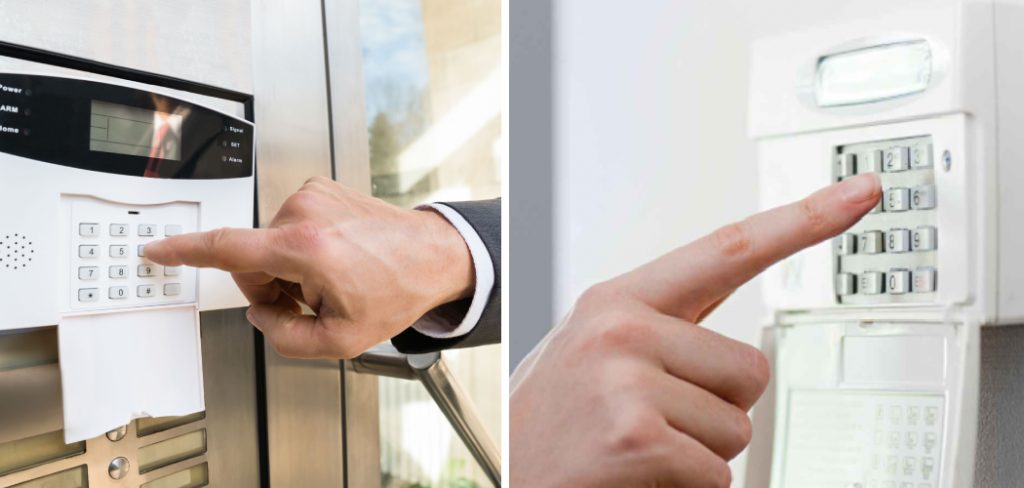
So, let’s explore the intricacies of preparing your home alarm before leaving, ensuring your residence remains a fortress even in your absence.
The Importance of Setting a House Alarm
It’s essential to have an alarm system in your home. Not only does it provide peace of mind, but it can also be a deterrent to potential intruders. Setting your house alarm before you leave is an important step that will help protect your family and valuables from burglars.
There are two main types of house alarms: wired systems and wireless systems. Wired systems are installed in a specific location and connected to an electrical outlet, while wireless systems run on batteries and can be moved from room to room.
No matter which type of alarm system you choose, it’s important that you take the time to properly set it before leaving your home. When setting the alarm, make sure all doors and windows are securely closed and locked. Then, enter the code to enable the alarm system. When you’re done, confirm that the alarm is working by testing it in several different ways.
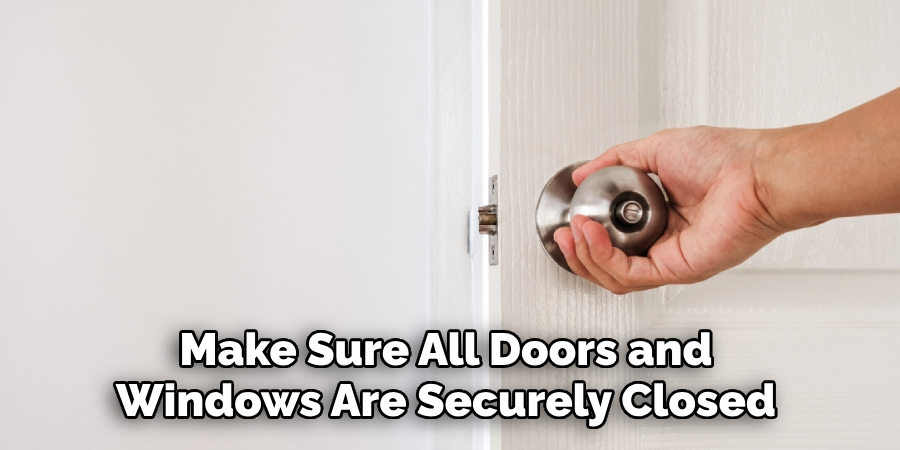
Another important step is to make sure everyone in your household understands how to use the house alarm. It’s a good idea to have all members of your family practice setting the alarm before an emergency arises. This will ensure everyone knows how to properly operate the system and that they won’t forget any important steps.
Reasons to Set Your Alarm before You Leave
Setting your house alarm before you leave is one of the most important steps you can take to ensure that your home and belongings are safe from intruders. It’s a simple procedure that only takes a few moments, but it can make all the difference in keeping burglars out of your house. Here are some other reasons why setting your house alarm should not be overlooked:
- It deters intruders. Having a visible house alarm will send a clear message that you take security seriously and that breaking into your home is not an option.
- It gives you peace of mind. When you leave your house, knowing that the alarm is set can bring great comfort and assurance, allowing you to relax while away from home.
- It can alert the authorities quickly. If an intruder attempts to break into your home, the alarm will sound and local police or other security personnel can be alerted right away.
- It saves you money in the long run. Insurance companies often reward homeowners who have a working alarm system with lower premiums, helping you save money over time.
Take these factors into consideration and commit to setting your house alarm every time you leave. It’s a small step that can make a big difference in protecting your home and giving you peace of mind.
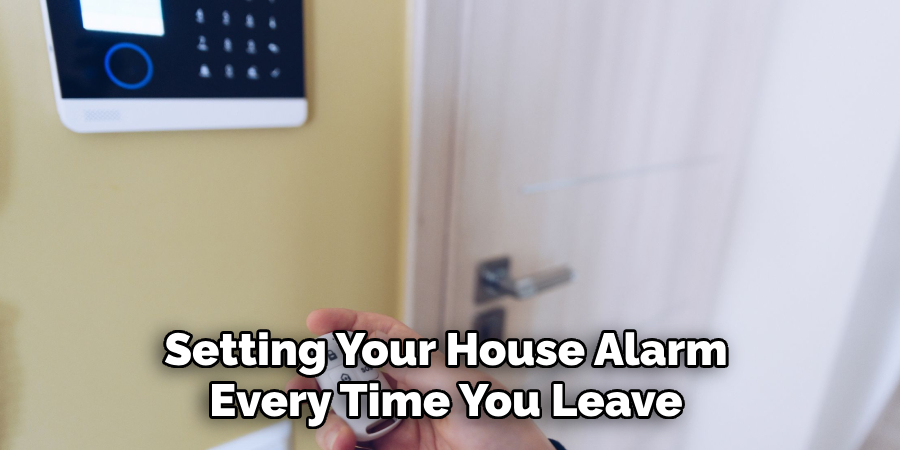
Identify the Type of Alarm System in Your Home
If you are planning on setting your house alarm before leaving, it is essential to first correctly identify the type of home security system you have. Knowing this will help you properly arm and disarm the alarm system when needed.
Depending on your type of alarm system, the steps for arming and disarming may vary. If possible, consult your user manual to find out more information on the type of alarm system you have installed in your home.
Once you have identified your alarm system, it is important to make sure all doors and windows are securely closed and locked. Even if you think that a window or door is completely shut, double-check by running your finger around the frame to make sure there are no gaps that could provide an intruder with a possible entry point.
Before arming your alarm system, make sure to provide any additional security measures that you have such as motion sensors and window sensors. Once all of these features are in place, close the door behind you and arm the alarm.
Your home security system should prompt you if it detects any open doors or windows when armed. If this happens, go back and double-check all the doors and windows to make sure they are securely closed.
10 Steps How to Set House Alarm before Leaving
Step 1: Assess the Alarm System’s Condition
Before you leave, it’s essential to conduct a thorough evaluation of your alarm system’s condition. Begin by checking all the components, including sensors, detectors, and keypads. Look for signs of wear and tear, and test each element to confirm that it’s functioning optimally. Replace any batteries that have died and address any maintenance issues promptly.
Step 2: Have Your Security Code Ready
Having your security code ready is crucial. Your security code, usually a personal identification number (PIN) or a password, is the key to arming and disarming your alarm system. Keep it confidential and share it only with those who need access.
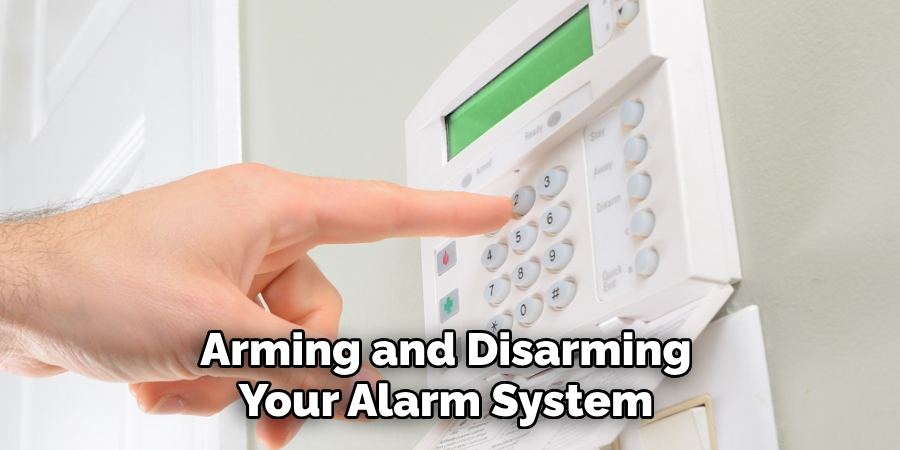
Step 3: Choose the Appropriate Arming Mode
Access your control panel or keypad to set your alarm. Enter your security code to arm the system. Most alarm systems have two main arming modes: “Away” mode, which activates all sensors, and “Stay” mode, which only activates perimeter sensors. Choose the mode that suits your situation. “Away” mode is suitable when you’re leaving the premises, while “Stay” mode allows you to move freely within your home.
Step 4: Secure Entry Points
Before arming your alarm, double-check that all doors and windows are securely locked. An alarm system is most effective when it’s combined with physical security measures like locks and deadbolts.
Step 5: Configure Motion Sensors
If your alarm system includes motion sensors, ensure they are active in the mode you’ve selected (usually “Away” mode when you’re leaving). Make sure there are no obstructions in front of the motion sensors that could trigger false alarms. You can adjust the sensitivity of the motion sensors for your home’s environment.
Step 6: Activate Perimeter Sensors
Perimeter sensors, such as window and door contacts, are essential for detecting unauthorized entry. Verify that they are active in the arming mode you’ve chosen. To activate them, press the “Perimeter” or ‘zone’ button on your control panel. Some systems may require you to manually activate each sensor; check the instruction manual for more details.
Step 7: Monitor Surveillance Cameras
If you have security cameras installed, ensure they are functioning correctly and have a live connection to your monitoring system if applicable. Surveillance footage can be invaluable in case of an incident, and remote access allows you to check in on your property while you’re away.
If you’re using a professional monitoring service, they are often able to watch your cameras remotely as well. Make sure you’re aware of their capabilities and protocols in case you need to contact them. Also be aware that some local laws may restrict the use of certain types of surveillance equipment.
Step 8: Verify Connectivity
If your alarm system is monitored by a security company or connected to your smartphone, perform a connectivity check. Ensure that your system has a stable connection and is communicating with the monitoring center or your mobile device as intended. Test remote arming and disarming if your system supports it.
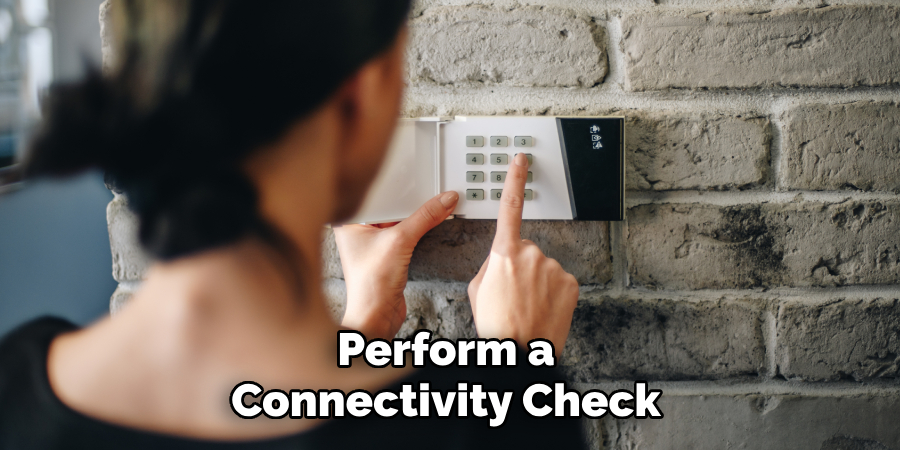
Step 9: Notify Trusted Contacts
For extended absences, it’s a good idea to inform a trusted neighbor or friend of your departure. Provide them with your contact information in case of emergencies and ask them to keep an eye on your property. Additionally, consider notifying your alarm monitoring company of your travel plans so they can respond appropriately to any alerts.
Step 10: Develop an Exit Routine
Create a departure routine to minimize the chances of forgetting essential tasks. Your routine may include checking appliances to ensure they are turned off, turning off lights to save energy, securing pets, and finally, arming the alarm system. This systematic approach ensures that your home is well-prepared for your absence.
Conclusion
In conclusion, setting a house alarm is an essential security measure for any homeowner. Keeping your home safe starts with taking all necessary measures to keep intruders away, such as keeping doors locked and setting alarms in both the home and yard. Knowing how to set house alarm before leaving can also provide peace of mind and help to deter potential criminals from targeting your home.
Whether you opt for a wired system or prefer a wireless one, it is important to make sure that all components of the system are functioning properly in order to prevent possible issues down the road. With these tips in mind, we hope that you now feel empowered and more confident when it comes time to setting your house alarm before leaving for extended periods of time!
About
Safety Fic is a distinguished figure in the world of Diy design, with a decade of expertise creating innovative and sustainable Diy solutions. His professional focus lies in merging traditional craftsmanship with modern manufacturing techniques, fostering designs that are both practical and environmentally conscious. As the author of diy, Safety Fic delves into the art and science of Safety Fic-making, inspiring artisans and industry professionals alike.
Education RMIT University
(Melbourne, Australia) Associate Degree in Design (Safety Fic) Focus on sustainable design, industry-driven projects, and practical craftsmanship. Gained hands-on experience with traditional and digital manufacturing tools, such as CAD and CNC software.
Nottingham Trent University
(United Kingdom) Bachelor’s in diyfastly.com and Product Design (Honors) Specialized in product design with a focus on blending creativity with production techniques. Participated in industry projects, working with companies like John Lewis and Vitsoe to gain real-world insights.
Publications and Impact
In diy, Safety Fic his insights on indoor design processes, materials, and strategies for efficient production. His writing bridges the gap between artisan knowledge and modern industry needs, making it a must-read for both budding designers and seasoned professionals.
